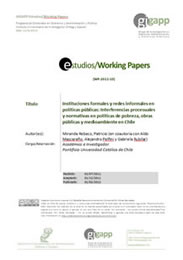Unemployment and activation policies in Norway
Abstract
Compared to most OECD countries, Norway has low unemployment rates, high employment rates, high educational attainment and relatively small income differentials. Outcomes have been good relative to most countries, also in the aftermath of the recent Great Recession. This paper provides a discussion about the policies towards the unemployed in Norway, their key elements and their key challenges. The policies towards the unemployed, with an emphasis on activation and skills development, have been key elements in Norway’s labour market policies and a contributing factor behind the good performance of the Norwegian labour market, but clearly not the only, or even the most important one. The institutional framework of coordinated wage bargaining, the management of the income from oil and gas and overall economic policies have had a strong structural impact as well as an impact on how the current crisis affected the Norwegian labour market.
Downloads
References
Albæk, Karsten, Rita Asplund, Erling Barth, Lena Lindahl, Pekka Vanhala, and Kristine von Simson (2015) «School to work transitions and labour market outcomes. A comparison of four Nordic countries» (forthcoming) Copenhagen: The Nordic Council of Ministers
Albæk, Karsten, Rita Asplund, Erling Barth and Kristine von Simson (2014) “Early school leaving and labour market prospects” Chapter 6 in Valkonen, Tarom and Vesa Vihirälä (eds) The Nordic Model – challenged but capable of reform TemaNord 2014:531, Copenhagen: The Nordic Council of Ministers.
Barth, Erling, Kalle Moene and Fredrik Willumsen (2014) «The Scandinavian Model – An interpretation» Journal of Public Economics Vol. 117:60-72.
Barth, Erling, Henning Finseraas and Kalle Moene (2014) «Political Reinforcement: How Rising Inequality Curbs Manifested Welfare Generosity” American Journal of Political Science doi: 10.1111/ajps.12129
Barth, Erling and Kristine von Simson (2012) “Arbeidsledighet og konjunkturer” Økonomiske analyser 5/2012, Statistics Norway
Cahuc, Pierre and Andre. Zulberberg. Labour Economics. MIT Press. 2004
Hardoy, I. (2005), “Impact of multiple labour market programmes on multiple outcomes: The case of Norwegian youth programmes”. I: Labour: Review of Labour Economics and Industrial Relations, 19:3;
Hardoy, I., K. Røed, H. Torp og T. Zhang (2006), Ungdomsgarantien for 20-24-åringer: Har den satt spor? ISF Rapport (2006:004)
Kostol, Andreas Ravndal & Magne Mogstad, 2014. "How Financial Incentives Induce Disability Insurance Recipients to Return to Work," American Economic Review, American Economic Association, American Economic Association, vol. 104(2), pages 624-55, February
Pareliussen, J. K. (2014), “Overcoming Vulnerability of Unemployment Insurance Schemes”, OECD Economics Department Working Papers, No. 1131, OECD Publishing
Røed Knut, and Oddbjørn Raaum, 2006. "Do Labour Market Programmes Speed up the Return to Work?," Oxford Bulletin of Economics and Statistics, Department of Economics, University of Oxford, Department of Economics, University of Oxford, vol. 68(5), pages 541-568, October
OECD (2013) Education at a Glance, Paris: OECD
OECD (2014) Employment Outlook, Paris:OECD
Copyright (c) 2017 Erling Barth

This work is licensed under a Creative Commons Attribution-NonCommercial-ShareAlike 4.0 International License.
Those authors who have publications with this journal, accept the following terms:
a. Authors will retain their copyrights and guarantee the journal the right of first publication of their work, which will be simultaneously subject to the Creative Commons Attribution-NonCommercial-ShareAlike 4.0 International (CC BY-NC-SA Recognition License). 4.0) that allows third parties to share the work as long as its author and its first publication are indicated in this journal.
Under this open access license, readers (users) can:
- Share — copy and redistribute the material in any medium or format
- Adapt — remix, transform, and build upon the material
Under the following terms:
-
Attribution — Users must give appropriate credit, provide a link to the license, and indicate if changes were made. You may do so in any reasonable manner, but not in any way that suggests the licensor endorses you or your use.
-
NonCommercial — Users may not use the material for commercial purposes.
-
ShareAlike — If remix, transform, or build upon the material, users must distribute your contributions under the same license as the original.
- No additional restrictions — Users may not apply legal terms or technological measures that legally restrict others from doing anything the license permits.
b. Authors may adopt other non-exclusive license agreements for the distribution of the version of the published work (eg: deposit it in an institutional telematic archive or publish it in a monographic volume) provided that the initial publication in this journal is indicated.
c. Authors are allowed and recommended to disseminate their work through the Internet (e.g. in institutional telematic files or on their website) before and during the submission process, which can lead to interesting exchanges and increase citations of the published work. (See The effects of open access).



